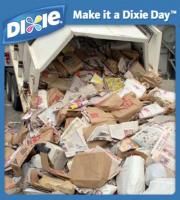 Perhaps it would have been better to make a sausage analogy for these links, rather than a coffee-and-sausage one. But since one of the links is to a post written by Marco Arment, coffee seems appropriate. (Then again, a Google search reveals that I am far from the first person to use the phrase “morning cup o’ links” so maybe I should spend less time worrying about it being a non sequitir and instead worry that I am horribly unoriginal.)
Perhaps it would have been better to make a sausage analogy for these links, rather than a coffee-and-sausage one. But since one of the links is to a post written by Marco Arment, coffee seems appropriate. (Then again, a Google search reveals that I am far from the first person to use the phrase “morning cup o’ links” so maybe I should spend less time worrying about it being a non sequitir and instead worry that I am horribly unoriginal.)
Each morning I start the day by perusing the latest on Twitter and my RSS feeds, and I almost always find something interesting to read. But today was more interesting than most, and simply retweeting the links didn’t seem adequate. Also, some of these links may become topics for discussion on this week’s episode of The Undisciplined Room, so this is your homework.
First up, we have a post on The Verge discussing homeless hotspots at SXSW. This is a topic I’ve been reading about for the past few days, but this post was the first that made me think beyond my gut reaction that this was shameless exploitation.
Next, with a HT to Daring Fireball, and via Marco Arment, we have a look at Curator’s Code and why it’s a bad idea. The evidence has been mounting for me that Maria Popova’s 15 minutes of (borrowed) fame are almost over (especially when I’m reminded of her love of Ayn Rand and Malcolm Gladwell), and Marco helps solidify that thought.
Then we have type designer Mark Simonson (who designed the Proxima Nova font that I use in the Room 34 logo and branding materials) discussing font anachronisms in The Artist. As much as I enjoyed The Artist, issues with the fonts it used (especially straight quotes, and the fact that it used fonts in a lot of places where hand lettering would have been more appropriate) even distracted me, so I can’t imagine what it must be like for someone like Mark Simonson or Chank Diesel. (Full disclosure: I did development work on Chank’s mobile website.)
And finally… Chicago musician and multi-talent Joshua Wentz has just announced the release of the Side 2 EP by Absinthe and the Dirty Floors, one of the many musical projects with which he’s involved. He’s also made a video for each song on the EP, like this:

